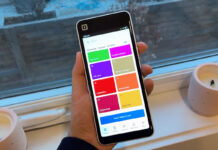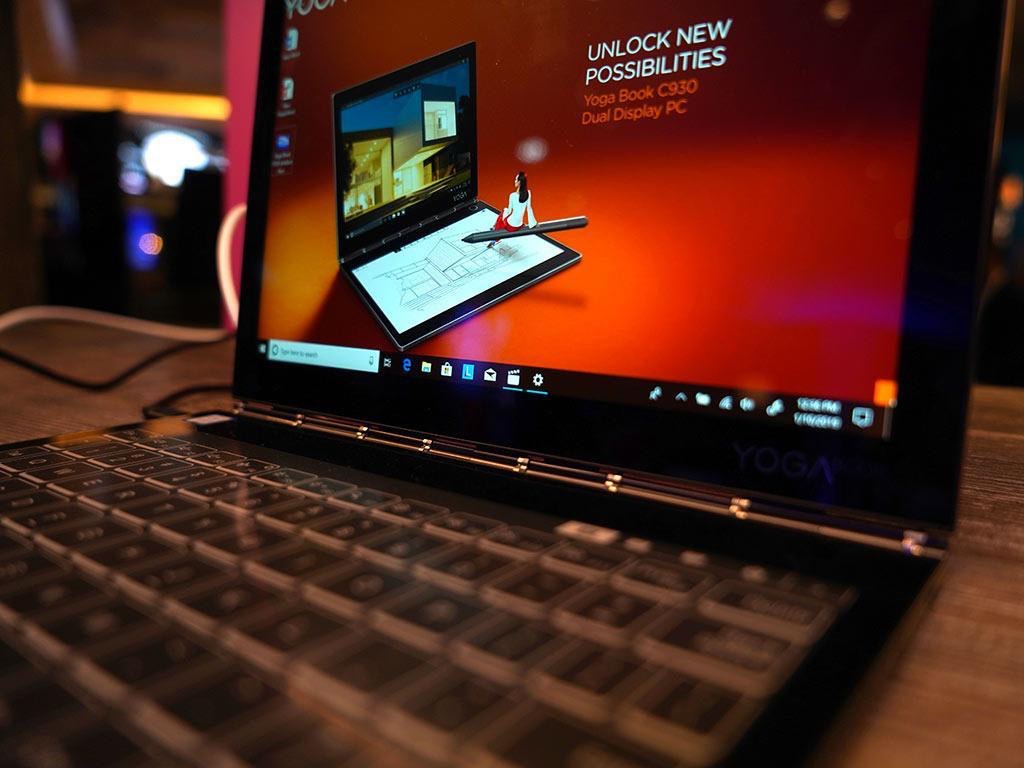
Like most consumer technology companies, Lenovo had a big presence at CES 2019, where it used the slogan “create, tweak, improve, defy.” I’m not sure which of its new products fall under which part of that slogan–or what the difference between ‘tweak’ and ‘improve’ is for that matter—but Lenovo definitely unveiled some cool stuff, including new computer gear, new devices for the smart home and something that’s in-between the two (you’ll see what I mean). Here are some highlights of what the company was showing off at CES 2019.
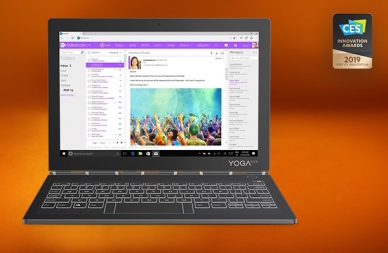 Yoga Book C930 2-in-1 laptop
Yoga Book C930 2-in-1 laptop
This dual-display ultra portable 2-in-1 laptop won a CES 2019 Innovation Award. And why wouldn’t it? Instead of display and keyboard, this laptop ‘defies’ convention by pairing a traditional QHD display with an E Ink display that replaces the keyboard. Actually that second display becomes the keyboard, and also makes for a great, battery-sipping e-reader. Lenovo says the new Yoga Book C930’s E Ink keyboard ‘improves’ typing productivity by 22% over the original.
Legion Y44w monitor (and ThinkVision P44w monitor)
Does stretching a monitor to an ultra-wide 43.4-inches and throwing in a curve count as ‘tweaking’ standard PC monitor design?
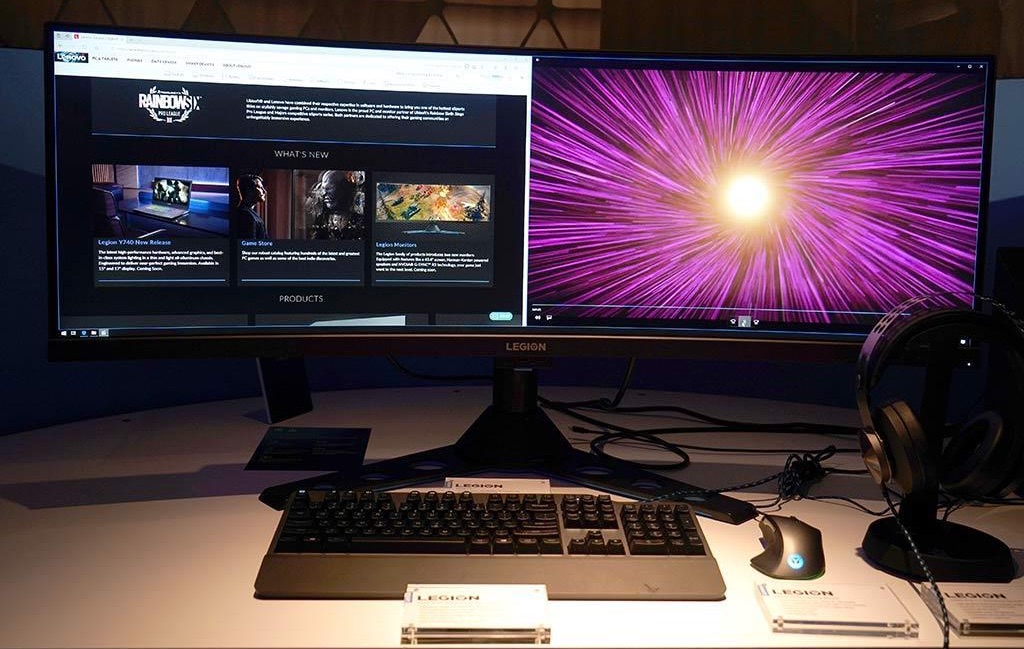
Because Lenovo showed off a pair of these monsters at the Consumer Electronics Show. Both the Legion Y44w and the ThinkVision P44w use a 43.4-inch curved LED panel, with a 32:10 aspect ratio, 3,840 x 1,200 resolution, FreeSync 2, HDR, and 4ms response time. With that much space available there are four USB 3.0 ports, two HDMI ports, DisplayPort and detachable speakers. The Legion version is aimed at gamers (talk about an immersive display) and has a more aggressively-styled base.
Smart Tab
Lenovo also released a pair of new Android tablets in Las Vegas, the Smart Tab P10 and Smart Tab M10. They have middling specs for Android tablets including a Snapdragon 450 processor, 10.1-inch Full HD display and Android Oreo. The more expensive of the two (the P10) gets 4GB of RAM instead of 2GB, four front-facing Dolby Atmos speakers, a glass back and a fingerprint reader. Honestly, that all sounds fairly unexciting, except Lenovo ‘created’ something new with the Smart Tab series.
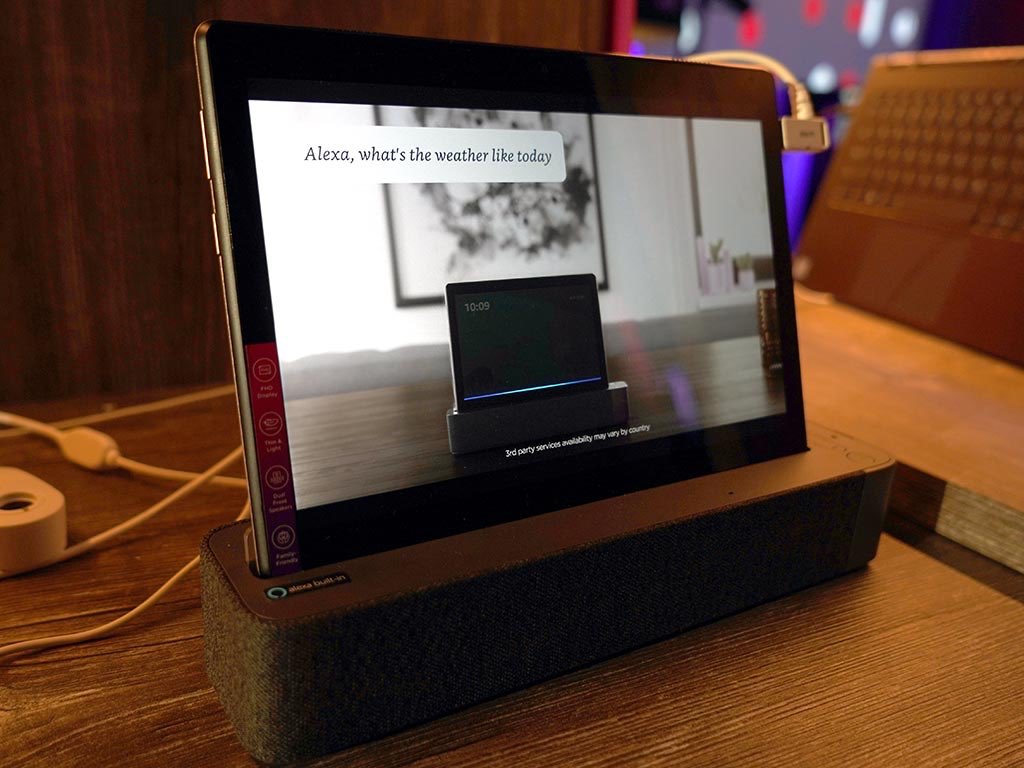
The tablets come with a Smart Dock. This base is covered in attractive fabric, houses a speaker, a far field microphone array, and holds the tablet at the perfect viewing angle while simultaneously charging it. And once docked the Smart Tab tablet automatically transforms into one of those display-equipped smart speakers, with Alexa ready to take your questions.
Take it out, tablet. Dock it, display (and camera)-equipped smart speaker. That’s pretty cool.
Lenovo Smart Clock With Google Assistant
One CES 2019 release that was getting a lot of attention was the diminutive Lenovo Smart Clock With Google Assistant. It’s a little cloth covered smart speaker with a colour display, but no camera. It has a physical microphone off switch, and a USB port for charging a smartphone. It’s meant to be a bedside alarm clock, but it has way more smarts, like a display that slowly grows brighter as your wakeup time approaches. You can also use it to view video from connected cameras, play music or even stream video to a Chromecast-enabled TV.

There was lots more at CES 2019 from Lenovo, much more that I have room for here. You can expect to see much of what the company created, tweaked, improved and defied soon at Best Buy.



